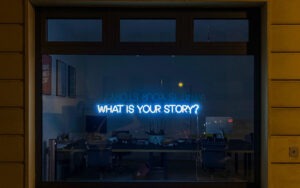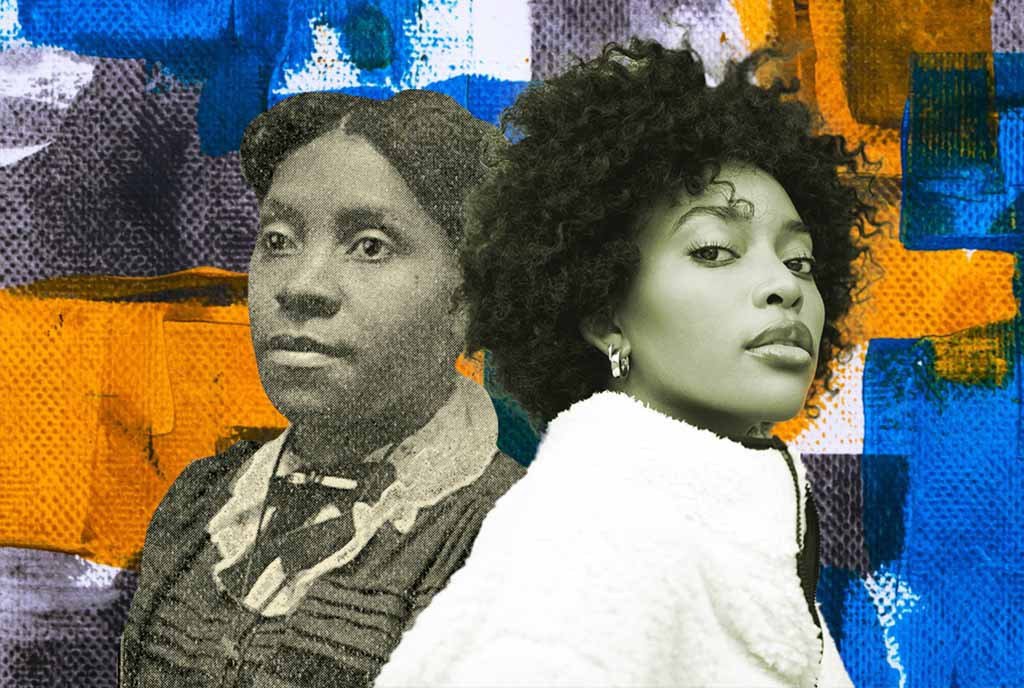
Editors’ note: This article from the summer 2020 edition of the Nonprofit Quarterly was originally published by the Othering & Belonging Institute at UC Berkeley, on April 18, 2018, as part of its Blueprint for Belonging project. It later appeared in the Quarterly’s winter 2018 edition, with minor changes. We reprint it now as part of the series we are running on the need to change the design principles around much of the work we do in this sector. Additional articles in this cluster are here, here, here, and here.
The culture of the progressive sector—as with all sectors—is rooted in stories. They are stories that convey values, mental models, assumptions, and identities, all of which ultimately guide our behaviors. Unsurprisingly, the most powerful stories that define the culture of our sector are not the stories about the issues we work on but rather the stories we tell ourselves about who we are (and aren’t), and how we should (and shouldn’t) act in the world to make change.
Narrative is now a big buzzword in the field of social change. That is more a testament to people wanting to understand narrative, however, than it is a testament to people actually understanding it. Evaluating our overall approach to narrative, as well as the specific narrative changes we have determined to achieve, comes down to a foundational question: What is our own narrative about the role that narrative strategy plays in social change—our own narrative about what it is, what it takes to do it well, and what’s at stake in our success? We tell ourselves a story about storytelling, a narrative about changing narratives. What purpose is it serving? Is it the right narrative? Is it the one we need?
I believe we have the wrong narrative about narrative.
Because of that, we are often working against ourselves, whether by reverting to bad habits or willfully denying the hard work we actually have to do—much in the way that, when making choices related to our health, we might revert to what feels easier, more comfortable, and more familiar to do, even if it’s not the healthiest thing to do or the thing that will actually yield positive health outcomes. We may say that our goal is to get healthier, but then we slide into the elevator instead of taking the stairs. What is the equivalent, in our narrative work and practice, of slinking into the elevator instead of taking the stairs, and pretending it doesn’t matter?
One way we do it: going to consultants whom we “vet” mostly by way of the habit of having hired them over and over than by assessing whether or not their work stands up to scrutiny and has helped enable a win. Another way we do it: trusting the established “expert” voices in the room, often but not only white men, who cite the familiar conventional wisdom or tactical advice, rather than working to find new and more diverse experts with better ideas, and calling the question on the conventional wisdom. (It’s hard not to default to the established experts we have, even though they have delivered a steady stream of losses, when they are the only people who have been given a platform and the only people let in the room.)
More ways we do it: trying so hard to turn every small success into a “model” that we can instantly use over and over; constantly setting our sights on the vaguely defined “moveable middle” in lieu of having a genuine and rigorously determined set of targets in mind; ignoring the expertise of people on the ground who have often made the right call on what would and wouldn’t work; assuming that a poll showing that the majority of people “agree with us” lessens the work we have to do to make change, and that polls, surveys, and comms-led focus groups are the best way of learning about what people truly believe, what motivates them, and how we can expect them to respond.
It is going to be very hard to break the patterns holding us back. I say that as a leader in the country’s cultural transformation with respect to LGBT acceptance and integration, during the period in which our successful strategies went to scale. And I also say that as a leader in the movement for racial justice today.
Leadership in narrative change, let alone social change, depends on the ability to break through our assumptions and defaults and forge new, better-informed practices.
That is—taking the stairs.
This paper presents a high-level outline of just some of the components of strategic thinking required to create the right story about narrative change within the progressive movement, with a focus on the components related to building the infrastructure we need to build what I call narrative power.
Three needs for change in our orientation stand out:
- We need the ability to follow through on narrative and cultural dispersion and immersion—over time, across segments, and at scale.
- We need actual human beings to serve as our main vehicle for achieving narrative change—people who are authentic, talented, equipped, motivated, and networked.
- We cannot forsake the power of brands—the relationships responsible for the way that most people come to change their thinking, reshape their feeling, and redirect their behaviors.
Further below, I explain these needs in greater detail.
An important note: One critical aspect of building narrative power is building the infrastructure of accountability—i.e., being able to limit the influence of false and dangerous narratives propagated by the right wing and others, whether that necessitates challenging those narratives directly or challenging those who enable them to proliferate. Changing the rules of the media landscape is an enormous part of the work of Color Of Change and my previous work at GLAAD, and is a subject I discuss in detail often—but it is not the focus of this paper.
NARRATIVE INFRASTRUCTURE
True infrastructure with respect to narrative is not about
maintaining a listserv for comms staff to align on rapid-response talking points and create more press releases;
or circulating more PowerPoint decks with superficial and unactionable observations created by opinion-focused researchers with a history of losing and selling out strategy for tactics;
or putting more PR firms in the position of speaking for us; or developing framing approaches uninformed by any real narrative or culture change experience; or staging more “convenings” at which frustrated leaders and staff members working in organizing and advocacy (including myself) come together and vent, in detail, about the short-sighted, race-averse, slow-to-change, culturally out-of-touch decision-making patterns of our peer and partner organizations throughout the progressive movement. That might be comms infrastructure, but it has nothing to do with narrative infrastructure.
Infrastructure with respect to building narrative power and achieving narrative change is not about those things. Narrative infrastructure is singularly about equipping a tight network of people organizing on the ground and working within various sectors to develop strategic and powerful narrative ideas, and then, against the odds of the imbalanced resources stacked against us, immerse people in a sustained series of narrative experiences required to enduringly change hearts, minds, behaviors, and relationships.
More fundamentally: narrative power is the ability to change the norms and rules our society lives by. Narrative infrastructure is the set of systems we maintain in order to do that reliably over time.
Narrative infrastructure helps us build power and achieve results at the level of a sector’s or society’s operating system, which then influences everything else that can and cannot happen in that system. Comms infrastructure takes place at the software application level, and its results are accordingly more limited. We need to change the way we do narrative change if we are going to use the power of narrative to change the rules of the systems and institutions that shape our society, shape public behavior, and thereby either fortify or attenuate injustice in our country.
One of the biggest mistakes we make as progressives when we think about infrastructure is actually leaving out—or redefining, to the point of total de-emphasis—the very idea of infrastructure itself.
Infrastructure and “capacity” are not the same thing,
at least not in the way most commonly discussed. When we mistake the latter for the former, we run into all sorts of trouble. The infrastructure to achieve follow-through, to the point of true dispersion and immersion, is not only about the capacity to do so—as if it were about resources and expertise alone. The capacity of a team to play a sport or put on a show effectively only matters if there is a larger infrastructure in place to make the games they play or shows they perform engage, and serve as meaningful stimulus to, millions of people.
We need a larger infrastructure for storytelling, if our capacity for storytelling will matter.
We can make videos and put them online, and have them reach a few hundred people—or even a million people—for a minute. (For the moment, even leaving alone the question of whether those videos have the most effective approach to content and framing, in service of our ultimate goals.) But we need to build the infrastructure that will make those videos known and loved and referenced by millions more people in a way that influences their lives. And we are simply not set up to do that in the way that corporations, religious organizations, and the right wing are set up to do it.
In the end, we can define narrative infrastructure as the ability to learn, create, broadcast, and immerse, and to do all four things strategically—both sequenced and integrated.
The challenge is that this kind of analysis—this kind of speech about narrative practice—often leads to a lot of nodding heads but rarely leads to enough moving feet. We drive ourselves neither to do things differently nor to do different things, both of which are critical. What is holding us back from doing the right thing is not the lack of analysis. Rather, we face a persistent set of internal cultural issues within our movement that are not effectively addressed, year after year.
Like any culture change challenge, we must first identify the incentives that normalize our status quo decisions, behaviors, and activities—the financial, emotional, and reputational incentives that keep the status quo practices in place: the pollsters, whose careers and summer homes depend on conducting and interpreting polling the very same way we always have done it, even though they have failed us (and not to mention that there are much better research solutions and practitioners out there); and the media consultants who direct our content and advertising strategies according to the conventional wisdom about which platforms (television) and which people (white people) yield the greatest return (though that “wisdom” has been disproven time and again, and those mistakes are often paid for by people of color).
So, while I hope this paper is helpful, it is no substitute for doing the work. It is only useful in catalyzing the work if it helps foster enough alignment among those with influence over a large enough set of progressive movement decision makers to make a difference in what our strategies and infrastructure look like.
NARRATIVE POWER
I must first confess my central bias, which is that the work of narrative is just one extension of the overall work of power. Narrative “product” is not narrative power. We do not need more ways to get our ideas on the record and archived online. Narrative power is not born of great content that no one watches, nor content we ourselves enjoy and think is right but has no social or political effect.
Narrative builds power for people, or it is not useful at all.
Nor is meaningful narrative change possible without real narrative power behind it. Narrative power is the ability to create leverage over those who set the incentives, rules, and norms that shape society and human behavior. It also means having the power to defeat the establishment of belief systems that oppose us, which would otherwise close down the very opportunities we need to open up to achieve real impact at the policy, politics, and cultural levels. Norms are powerful. Any challenge to norms, and any effort to forge new norms, must take a comprehensive approach.
Sometimes that means the power to connect two ideas that people hadn’t connected before, which leads to a new set of emotional and intellectual conclusions that channel voices and efforts in a new direction. As an example: there was no connection between the moral weight of the civil rights movement and the political struggle over net neutrality until we made that connection. The ability of Color Of Change, Center for Media Justice, National Hispanic Media Coalition, and Free Press to connect those two ideas crowded out the influence of telecom companies over Black and Brown members of Congress who were initially leaning away from doing the right thing on net neutrality.
As another example: we will not have the power to change the rules that create poverty and sustain corporate control over our lives, unless we build the power to reshape the popular mental model that governs how people think poverty works. Poverty is not the result of bad decisions; rather, it is because of poverty that people are forced into making impossible and harmful decisions. In the popular imagination, poverty is the product of bad personal decisions, not bad collective decisions.
Therefore, many people believe that poverty is unfortunate (which creates no dissonance) without believing that it is unjust (which would create dissonance yielding intolerance and in need of resolution). It is only by believing that poverty is unjust—and that a just system will be good for everyone—that people will give consent to change; but we have not yet developed a coherent narrative about poverty’s injustice that is motivating, nor a set of experiences that will be anywhere near compelling enough for people to internalize that new narrative and the mental model embedded within it. That is, we have not invested in the right narrative infrastructure, neither for developing the narrative itself nor for making it powerful.
Sign up for our free newsletters
Subscribe to NPQ's newsletters to have our top stories delivered directly to your inbox.
By signing up, you agree to our privacy policy and terms of use, and to receive messages from NPQ and our partners.
Narrative power takes many other forms, and can be assessed by many other criteria that are not possible to address in this short essay. But my larger point is that narrative power is not merely the presence of our issues or issue frames on the front page. Rather, it is the ability to make that presence powerful—to be able to achieve presence in a way that forces changes in decision making and in the status quo, in real, material, value-added terms. (Knowing the difference between “presence” and “power” is a major rhetorical theme and strategic guide for both me and Color Of Change, which I address often in other venues.1)
Another bias with respect to overall narrative strategy:
our goal in our narrative work must extend far beyond empathy; empathy alone is never enough.
Empathy cannot overcome norms alone, especially those sustained by a well-organized conservative opposition. Many assume that narrative change is about turning up the volume on the broadcast of our stories. In reality, it is just as much about changing the rules of cultural production, i.e., influencing other broadcasters’ and platforms’ narratives. And those rules are much less about ensuring or leveraging empathy as they are about capturing normativity, i.e., modeling in media the institutionalization of inclusion that we want to see in society, and changing the incentive structures of media makers to align with those practices.
Many incorrectly assume that the strategy behind the success of marriage equality was focused only on empathy—winning by focusing on the shared value of love—and not by maintaining a parallel focus on power. Focusing on increasing empathy and dignity for oppressed people was not enough to change the rules society lives by and end that oppression. When we were able to engender empathy among large swaths of straight people for gay and lesbian people who couldn’t visit their partners in the hospital, they felt bad, they felt it was unfortunate, and they wanted to let those people have access…by granting civil unions. But they wouldn’t think to go any further than that.
That’s as far as empathy got us: seeing (some) LGB people’s situation as unfortunate—not as unjust,
and wanting to solve a specific technical problem rather than change systems writ large, to create justice. It did not make them want LGB people overall to be powerful; it did not make them want to change the status of LGB people overall in society. (Let alone, trans people.) It did not defeat norms institutionalized by religion, culture, community, family, and the infrastructure of Focus on the Family, Concerned Women for America, and the right-wing TV and radio networks that are also tied into megachurch broadcast networks—ideas that had great power and could not be overcome by a shift in emotion alone. Empathy was important, but it was not enough.
To get to marriage equality, we had to focus on changing power dynamics, not just emotional dynamics, and pursuing both in an integrated way required a mature, strategic narrative approach.
THREE NEEDS, THREE INVESTMENTS
With respect to the infrastructure required for effectively building and leveraging narrative power, three points are critical as we think and plan together across the many movements that fall under the banner of the progressive movement.
Much of it comes down to investing in the abilities that will allow us to effect long-term change.
- We need the ability to follow through on narrative and cultural dispersion and immersion—over time, across segments, and at scale.
If we become consumed with the goal of getting our issues on the front page (presence), rather than implementing our values and solutions in the real world (power), we miss the point of narrative’s role in social change. It’s not about getting a great headline, or getting a storyline in one television show, or getting a few million video views. Those are necessary tactical executions but are not themselves a narrative strategy, which we often mistake them to be. The work is not nearly over when we achieve those objectives.
We must equip ourselves to follow through by becoming both present and powerful, in a consistent way, in the lives of the millions of people whom we believe are essential for our success (i.e., target segments).
Once we’ve gotten our message out, we must doubly focus on getting our message in.
Meaning: we must follow through to ensure that we are immersing people in our worldview, giving them ways to express that worldview for themselves and to reinforce it and paint their world with it. That is, to constantly keep our ideas in circulation—looking for ways to tell the same story in different terms, time and again, endlessly.
That requires, among other things, investing in the underlying ideas and values beneath our issues, moving them through social and personal spaces that aren’t explicitly political or focused on issues but are nonetheless the experiences and venues through which people shape their most heart-held values.
Detailing what an investment for each might look like is beyond the scope of this paper, but I can preview an example:
We know TV isn’t where all our people are “living” and where they are most open to connection. So why do we put all our ads there? And why, when we do move campaigns online, do we maintain such an un-targeted and marginal approach? We need to learn, create, broadcast, and immerse as if we’re serious, and at the level that both our target segments require and the channels through which we reach them require. (And why do people in Russia know how to play the game in our country better than we do, and invest in playing it more than we do?)
- We need actual human beings serving as our main vehicle for achieving narrative change—people equipped, talented, motivated, and networked to effectively spread new and compelling stories throughout their networks and subcultures, as well as spreading the values and thought models they contain, in order to move those ideas into a “normative” position in society.
Without people in “narrative motion,” we cannot achieve narrative change. We must remember that a few big clouds do not water the earth below them—millions of drops of rain do the watering.
We cannot let ourselves get lost in the clouds. We must ensure we are raining down on our culture and our narrative environment with the voices and actions of real people, in order to nourish that environment and facilitate the growth of the ideas we want to flourish in it.
There is a specific kind of infrastructure to bring about the cycles of rains and replenishment we need—to enable the widespread narrative immersion and mobilization we need—i.e., to make it rain. It requires investments in individuals and networks, both our core base and unlikely, presently un-activated groups.
The right wing beats us here almost all the time. They create echo chambers, as we know. But they also provide platforms, and create their own celebrities who are always on script and trained to build dedicated audiences, creating narrative networks that entangle millions and millions of people in extremely deep and immersive experiences that reinforce specific values, ideas, desires, and norms. Those audiences become motivated, empowered, and confident emissaries, taking on their families, their social and work communities, and other spaces far outside of the right-wing spaces in which they were first immersed in these ideas (and which they keep going back to for deeper and deeper immersion). It is tireless, expensive work that they do well. It is far beyond “comms.” It is culture, it is business, it is community life. Progressives build our own islands, but they are rarely as big and populated, and we are not nearly as good at using them as a base for extending our reach and influence into the lives of those living on other islands that may be less explicitly political environments.
- We cannot forsake the power of brands—the relationships responsible for the way that most people come to change their thinking, reshape their feeling, and redirect their behaviors.
We know from research that most people do not first decide on the issues they believe in and then figure out who among the leaders and forces of the world are the best vehicles for bringing those opinions and values to life. Rather, most people—all of us, if we are honest—first decide on the people we like or trust or feel inspired by, and then understand the world through them (as our lead interpreters), assuming that whoever they are and whatever they do works in service of the values we share (which they help define for us, perhaps even more than we define them for ourselves). That’s the power of brand.
Put simply: brands are among the most compelling narratives we engage with.
A brand narrative is the story of a persona—real or fictional, individual or organizational. Nike has a brand narrative that drives people to engage with them in a certain way and think about their lives, and even life itself, in a certain way. And that brand narrative can influence people’s feelings, thoughts, and behaviors much more than a doctor’s lecture to a patient about health issues and performance—the very same “issues” Nike addresses through brand narrative. Democrats have a brand narrative, as do national and local organizations in our sector.
How well those brands are managed may affect how people think about issues far more than how well we manage issue narratives themselves.
Elizabeth Warren had a foundation and set of core adherents based both on what she believed and the actions she took in service of those beliefs. But her success as a powerful figure is a result of her larger brand narrative (i.e., who people think she is and want her to be), far more than her policy positions. Being who she is—i.e., her brand power—then allowed her to align many more people with her worldview orientation, belief system, and actions than she otherwise would have without that brand power. Millions more people. Bernie took the “gateway” approach of brand narrative to the next level, using his own persona to build brand power and channel the inchoate emotions, dreams, and vulnerabilities of millions of people into the formation of an intuitively “true” and culturally widespread platform for economic “revolution.”
But because this happened without much of a grand strategy in place from a movement perspective—let alone a comprehensively designed one—we did not invest in the brand power of anyone else but these two white people representing New England.
We did not have (or put) the infrastructure in place to create brand narratives for people or organizations that could reach and attract the full range of Americans and American experiences and activate the networks of the communities essential to progressive success.
Even as they stood, Warren and Sanders did not do the things they could have done to increase their brand power among more Americans. But the real problem is that we did not invest—and consistently do not invest—in the people and organizations whose brand power can reach more people than the occasional break-out white Democrat or white pundit or white social leader can.
And when people of color are cut out of the progressive brand pantheon, progressives tend to get cut out of the political pantheon, and the great majority of Americans are cut short of the futures they deserve.
People have brand narratives, organizations have brand narratives, and even places and movements have brand narratives. Yet, across the political, cultural, and consumer realms, we invest almost nothing in brand power—and, frankly, are not very good at it even when we do.
It has always surprised me that when it comes to infrastructure, we focus so much more on framing and narrative development for the issues—whether policy issues or larger social issues—than on the narratives (i.e., brand narratives) that we know have far more sway over creating the kind of long-term bonds that catalyze metanarrative shifts and lead to the participatory behaviors we want.
…
Breaking patterns is hard, especially when it requires learning new things from new people and following new leaders, while we push ourselves to find better answers and ultimately embrace winning practices.
But the motivating question is simple: Are we happy? Are we happy with how we’re doing narrative right now and the results we’re getting, and are we willing to keep on doing the same?
If not, then we are going to have to make a change. It’s going to be painful.
It’s going to mean that some people who had expert status will not be able to keep it. It means that the inner expert in each of us is going to have to step back and focus more on learning what we need to change, than on the ideas and anecdotes, tools and recommendations we want to keep selling.
We need to build new narrative infrastructure (as part of our overall movement infrastructure) in order to build narrative power (as part of building our overall movement power). Without narrative power, we are not going to change the rules of society—our society’s operating system—and shape society in the image of our values. Without taking a hard, serious look at what we are missing in terms of narrative infrastructure, we cannot truly say we are doing all we can do to fight for those values and the people they represent.
Note
- See, for instance, Rashad Robinson, “Keynote Talk 2017: ‘Are We Going To Get This Right?,’” Personal Democracy Forum, July 17, 2017.













